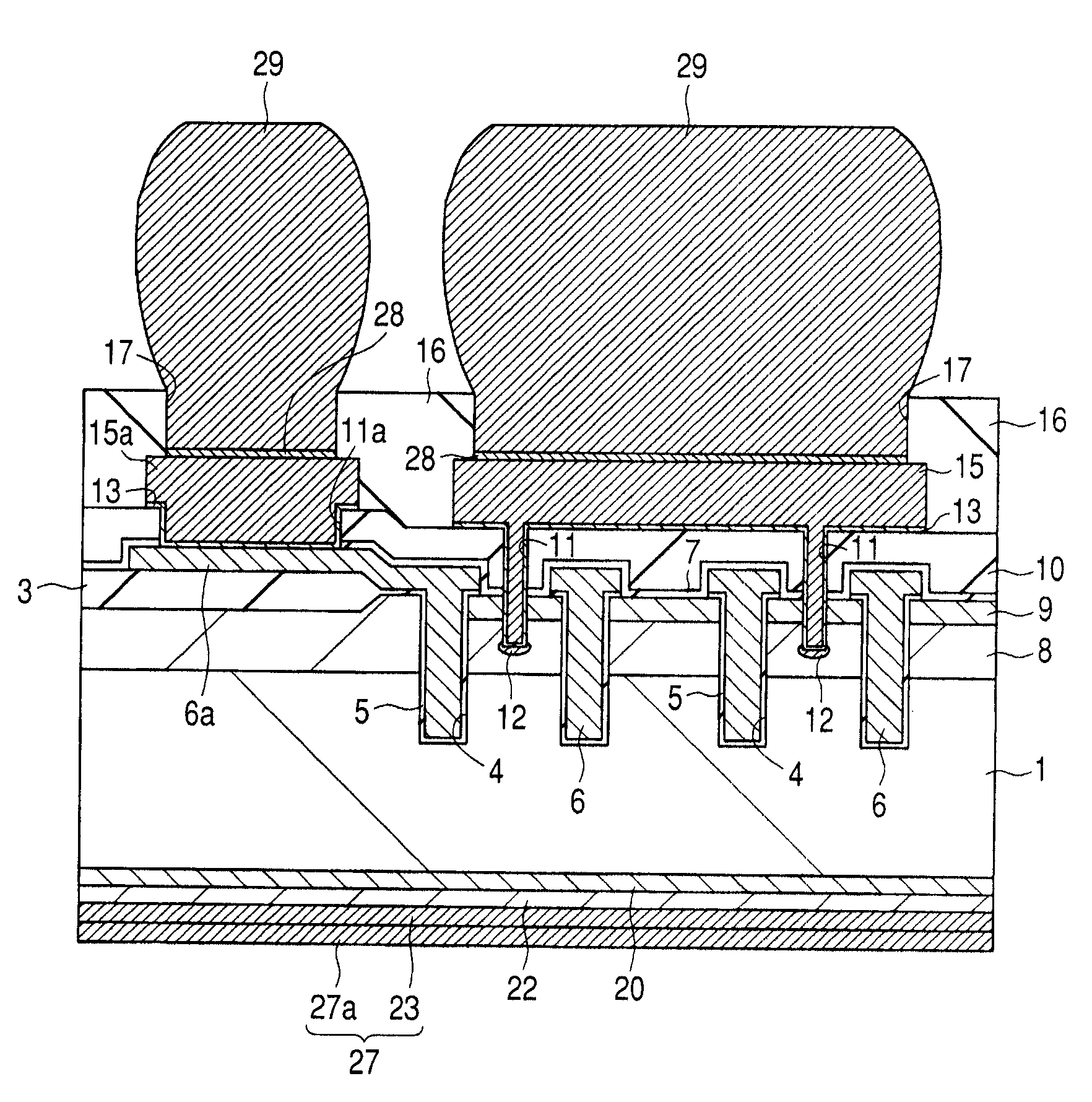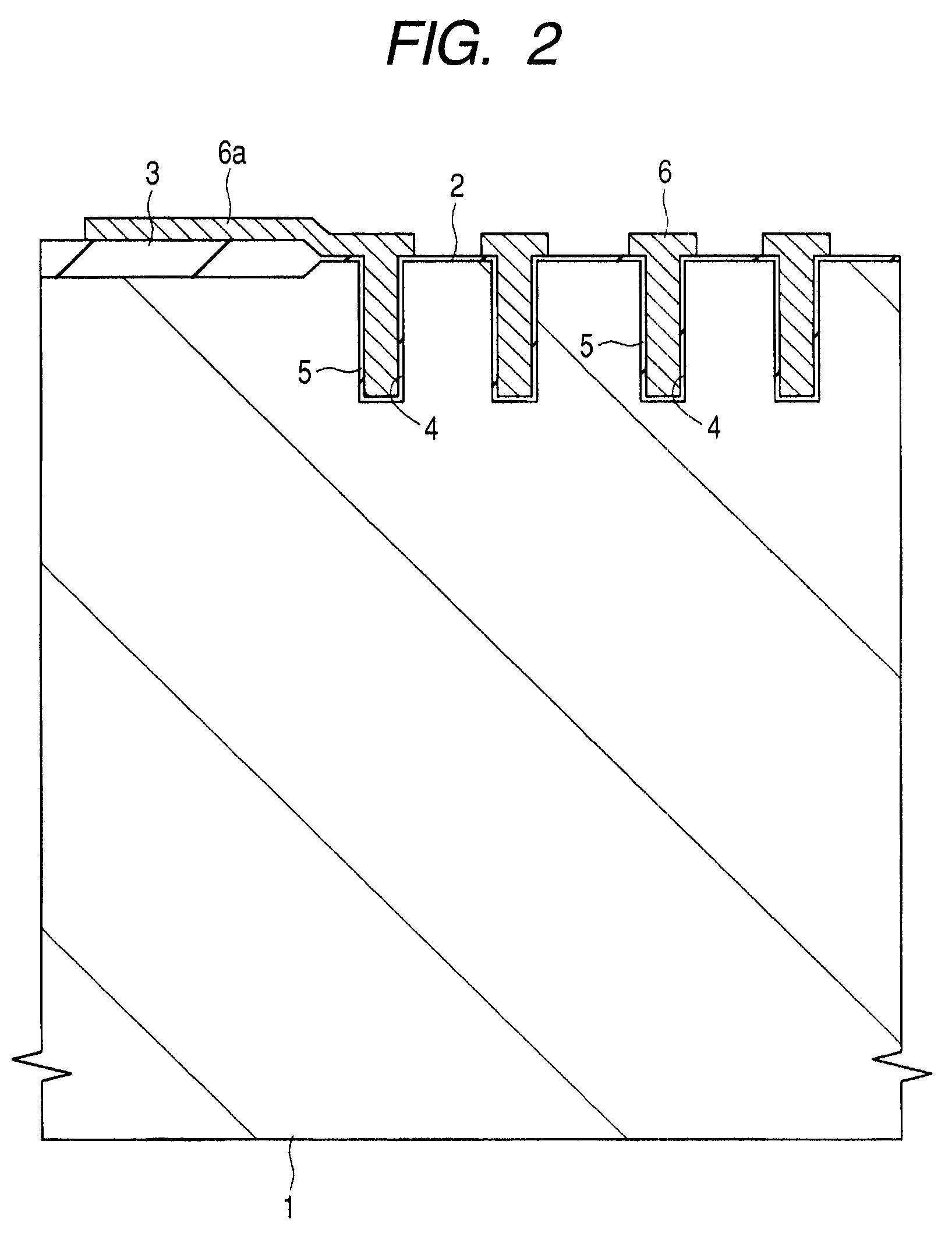Manufacturing method of a semiconductor device
a manufacturing method and semiconductor technology, applied in semiconductor devices, semiconductor/solid-state device details, electrical devices, etc., can solve the problems of difficult to realize both a high activation ratio, poor controllability of hole injection from a collector electrode, and high production cost of igbt using the double epitaxial wafer, etc. corrosion of the contact electrode can be prevented, high breakdown voltage, excellent switching characteristics
- Summary
- Abstract
- Description
- Claims
- Application Information
AI Technical Summary
Benefits of technology
Problems solved by technology
Method used
Image
Examples
embodiment 1
[0042]A semiconductor device according to Embodiment 1 has an IGBT with an LiPT (Low Injection Punch Through) structure as a semiconductor element. The semiconductor device according to this Embodiment 1 will next be described in accordance with the manufacturing steps based on FIGS. 1 to 16. FIG. 1 is a flow chart of the manufacturing method of the semiconductor device; FIGS. 2 to 8 are fragmentary cross-sectional views illustrating the manufacturing method of the semiconductor device; FIG. 9 is a graph showing displaced silicon atoms generated by the implantation of boron ions; FIG. 10 is a graph showing the relationship between the switch-off time (tf) and activation ratio of boron ions of the IGBT; FIG. 11 is a graph showing the relationship between the on-voltage (Vce) and switch-off time (Tf) of the IGBT; and FIGS. 12 to 16 are fragmentary cross-sectional views illustrating the manufacturing method of the semiconductor device.
[0043]As illustrated in FIG. 2, a semiconductor sub...
embodiment 2
[0079]A semiconductor device according to Embodiment 2 has, similar to the above-described one according to Embodiment 1, an IBGT having an LiPT structure as a semiconductor element, but is different from it in the thickness of the semiconductor substrate. In Embodiment 1, described was an IGBT using a semiconductor substrate having a thickness not greater than 120 μm (for example, from 70 to 120 μm). In Embodiment 2, on the other hand, an IGBT uses a semiconductor substrate having a thickness exceeding 120 μm and the reinforcing plate used in Embodiment 1 is not used during the fabrication of the IGBT. Such a semiconductor device of Embodiment 2 will be described based on FIGS. 17 to 21. FIG. 17 is a flow chart of the manufacturing method of the semiconductor device; and FIGS. 18 to 21 are fragmentary cross-sectional views illustrating the manufacturing method of the semiconductor device. Manufacturing steps until the formation of an emitter electrode (interconnect 15) of the IGBT ...
PUM
 Login to View More
Login to View More Abstract
Description
Claims
Application Information
 Login to View More
Login to View More - R&D
- Intellectual Property
- Life Sciences
- Materials
- Tech Scout
- Unparalleled Data Quality
- Higher Quality Content
- 60% Fewer Hallucinations
Browse by: Latest US Patents, China's latest patents, Technical Efficacy Thesaurus, Application Domain, Technology Topic, Popular Technical Reports.
© 2025 PatSnap. All rights reserved.Legal|Privacy policy|Modern Slavery Act Transparency Statement|Sitemap|About US| Contact US: help@patsnap.com



